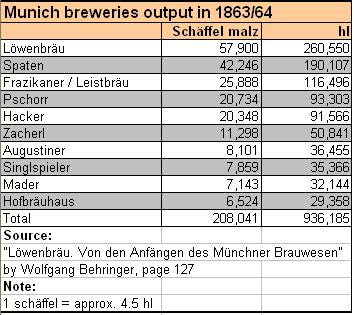I've a favour to ask. To someone in the Manchester area. I would do it myself, but I've no idea when I'll have chance.
What's the favour? Photograph Boddington's brewing records I'd greatly appreciate the help and would be prepared to reward the favour-giver.
The records are held here:
 Museum of Science and Industry in Manchester
Museum of Science and Industry in ManchesterLiverpool Road
Castlefield
Manchester
M3 4FP
England
Tel: 0161 606 0127
Fax: 0161 606 0186
Email: archive@mosi.org.uk
Open : Tue-Thu 10.00-16.30
Closed : 25, 26 December, 1 January
These are the documents I'm interested in:
M693/405/125 Brewing Books 1900 - 1903
M693/405/126 Brewing Books 1913 - 1917
M693/405/127 Brewing Books 1917 - 1929
M693/405/128 Brewing Books 1929 - 1938
M693/405/129 Brewing Books 1939 - 1946
M693/405/130 Brewing Books 1947 - 1951
M693/405/131 Brewing Books 1952 - 1958
M693/405/132 Brewing Books 1959 - 1964
M693/405/133 Brewing Books 1965 - 1970
M693/405/134 Brewing Books 1971 - 1974
M693/405/135 Brewing Books 1975 - 1979
M693/405/136 Brewing Books 1980 - 1983
M693/405/137 Brewing Books 1961 - 1963
Of those, the ones covering 1900 to 1951 are the ones I'd like to have a look at most. And this one:
M693/405/15
Various Trade and Other Statistics: Summary of brewers in Manchester with quantities brewed 1862 - 1879; Summary of brewers in Burton-on-Trent with quantities brewed 1866 - 1880; Returns 1873 - 1883; Record of sales in Rochdale, Crewe, Middlesborough, Birmingham, Burton-on-Trent, Newcastle 1873 - 1886; Summary of types of trade 1874 - 1882; Summary of family trade 1880 - 1886.
So can anyone give me a hand with this?
 Did I mention my new book? I've got a new book. It's called "War!" I did mention it? I can't remember that. Must have been drunk. Or distracted.
Did I mention my new book? I've got a new book. It's called "War!" I did mention it? I can't remember that. Must have been drunk. Or distracted.













































































































